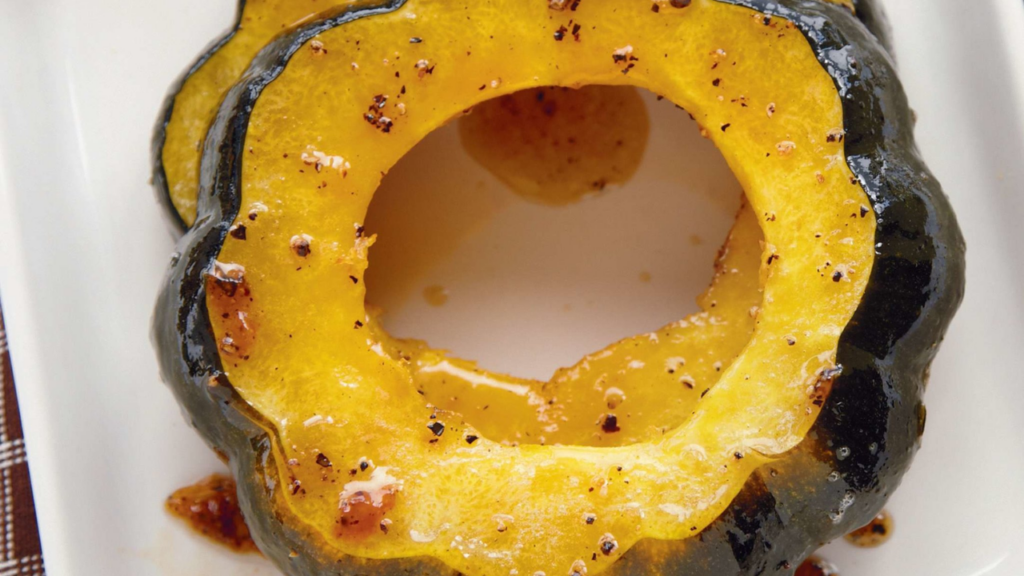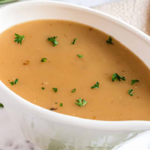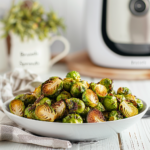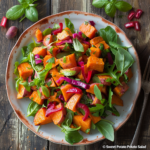Imagine a crisp autumn day, the air filled with the scent of cinnamon and maple. As you step into the kitchen, a warm oven beckons, promising a cozy and comforting meal. Today, we’re diving into the delightful world of maple-roasted acorn squash.
This dish is a celebration of fall flavors, combining the natural sweetness of acorn squash with the rich, earthy notes of maple syrup. With its tender flesh and caramelized edges, each bite is like a taste of the season itself. Join us as we explore how to create this simple yet exquisite dish that will surely become a favorite at your table.

Maple-Roasted Acorn Squash
Equipment
- 1 Baking sheet
- 1 Silicone brush
- 1 Sharp chef’s knife
- 1 Cutting Board
- 1 Oven
Ingredients
- 2 small acorn squash
- Olive oil
- ¼ cup maple syrup – plus more to taste
- ½ teaspoon Kosher salt
- ¼ teaspoon ground black pepper
Instructions
- Set oven temperature to 425°F.
- Squash can be sliced by cutting it in half lengthwise. Use a spoon to scrape off the seeds. Next, cut each piece in half once more. Cut into uniform slices, each ½ inch thick.
- Don’t overcrowd the very big sheet pan; instead, arrange the sliced squash in a single layer. Pour a lot of olive oil on it. Evenly season with salt and pepper, then toss to mix.
- Roast until almost tender, about 18 minutes.

- Take out of the oven. Lower the oven’s setting to 400 degrees Fahrenheit. On all sides, coat the squash with maple syrup.
- Once again, roast in the oven for 8 to 10 minutes, or until the sugars start to caramelize. Serve right away. Drizzle with extra maple syrup, if preferred. Have fun!
Notes
- Seek for one with a dull, smooth rind that isn’t overly glossy. It shouldn’t have any soft places and feel substantial for its size. Green and yellow should be the colors used. The squash is overripe if the rind is too yellow.
- To cut the squash, use a sturdy wooden cutting board and a sharp chef’s knife.
- Ten minutes before it’s done, sprinkle some melted butter over the mixture for a fragrant, buttery flavor. (Optional)
- Cut the acorn squash into slices up to three days in advance. When you’re ready to cook, season and proceed as directed for roasting.
- Refrigerate leftovers for up to three or five days.
Nutrition Facts
| Nutrition | Value |
|---|---|
| Calories | 210kcal |
| Carbohydrates | 25g |
| Protein | 1g |
| Fat | 13g |
| Saturated Fat | 5g |
| Sodium | 878mg |
| Iron | 1mg |
| Calcium | 60mg |
| Vitamin A | 570IU |
| Potassium | 421mg |
How to Pick a Good Acorn Squash
- Seek those having a dull rind and a smooth exterior. It’s not ripe yet if it shines too much.
- For its size, it ought to feel robust and substantial.
- Both green and yellow are desired, but too much yellow signals that the fruit is overripe, so stay away from such.
- Stay away from those with soft places.

What’s the Difference Between Acorn Squash and Butternut Squash?
The size and form of butternut and acorn squashes differ most obviously from one another. Butternut squash is long and shaped like a pear, with a consistent thickness all the way around. Compared to acorn squash, this larger size yields a higher output of flesh.





